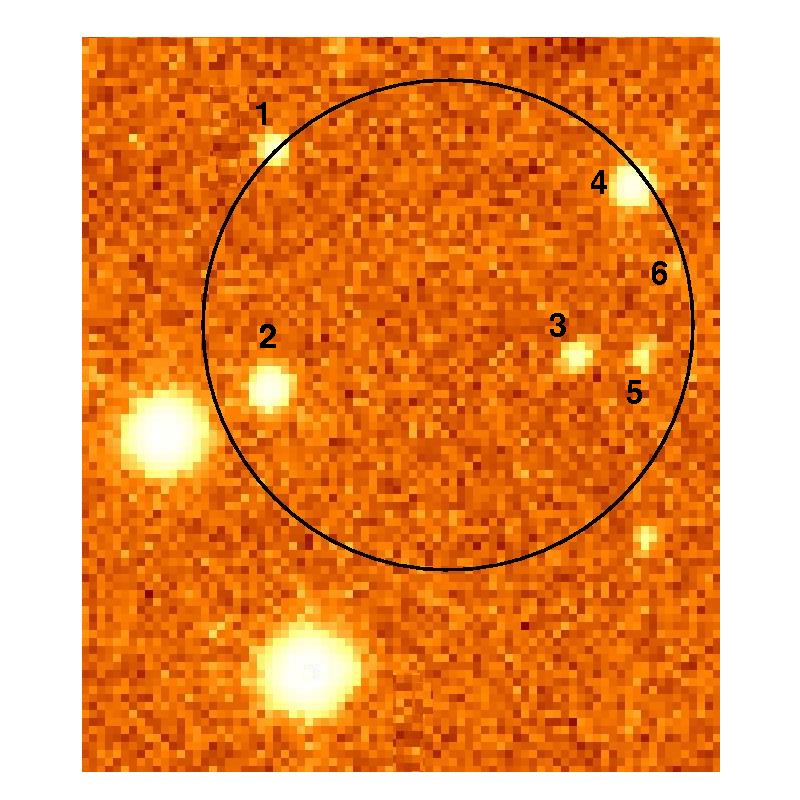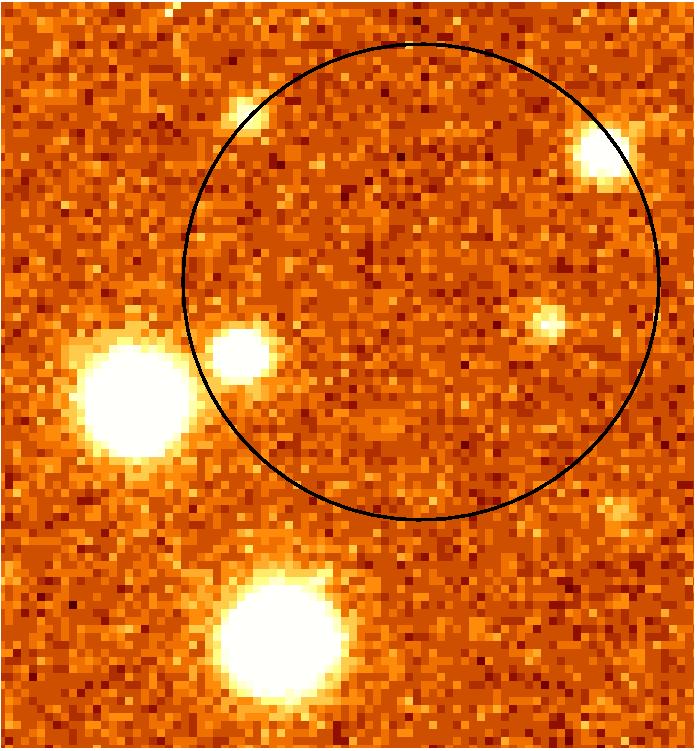GRB040106 - NTT observations
GRB040106
R-band images taken with
NTT
2004 January 7.356 UT (top) and 8.351 UT (bottom): NTT +
EMMI


The error box of the X-ray source detected by XMM-Newton inside the
GRB040106 INTEGRAL error circle as imaged in the R band on 2004
January 7.356 UT and 8.351 UT with NTT+EMMI.
North is at top, East is to the left; the field size is about 25 x 30
arcsec.
Six sources are detected within the XMM-Newton error circle. Coordinates
and magnitudes are reported below.
The afterglow is source #5 in the January 7.356 image.
GCN Circular no. 2515
GRB040106, likely optical afterglow
Nicola Masetti, Eliana Palazzi (IASF/CNR, Bologna), Evert Rol, Elena
Pian (INAF, OA Trieste) and Emanuela Pompei (ESO) on behalf of GRACE,
report:
We have observed the Integral error circle of GRB 040106 (Mereghetti
et al., GCN 2505), on two consecutive nights (6-7 and 7-8 Jan 2004) at
the ESO NTT with EMMI in R band.
Within the error circle of the XMM-Newton counterpart (Ehle et al.,
GCN 2508), we find only one source which shows a clear fading
behaviour, as follows:
mid obsdate, UT filter exptime magnitude err(magn)
07/01/04, 08:33 R 10 min 22.4 0.1
08/01/04, 08:25 R 20 min 23.7 (*) 0.3
* 2 sigma detection
The magnitudes are calibrated using the USNO-A2.0 star U0375_14656270,
located at coordinates RA = 11:52:18.18, Dec = -46:46:54.3 (J2000),
assuming it has magnitude R = 17.1. The magnitude errors are
statistical only, i.e. they do not include any zero point errors.
All other sources within the XMM-Newton error circle show no sign of
fading, confirming the findings by Fox et al. (GCN 2514). We therefore
identify the fading source as the likely optical afterglow of GRB
040106.
The position of the afterglow is
RA = 11 52 12.27 (J2000)
Dec = -46 47 15.8 (J2000)
with a 0.5 arcsecond error in both coordinates.
The NTT images can be viewed at
http://www.bo.iasf.cnr.it/~masetti/grb040106.html (source 5 in the
images is the afterglow).
Further observations at all wavelengths are encouraged.
 The BeppoSAX-GRB team in Bologna
The BeppoSAX-GRB team in Bologna
 The GRACE web page
The GRACE web page
 Back to Nicola Masetti's Home Page
Back to Nicola Masetti's Home Page
Back to the IASF/Bologna Home Page

